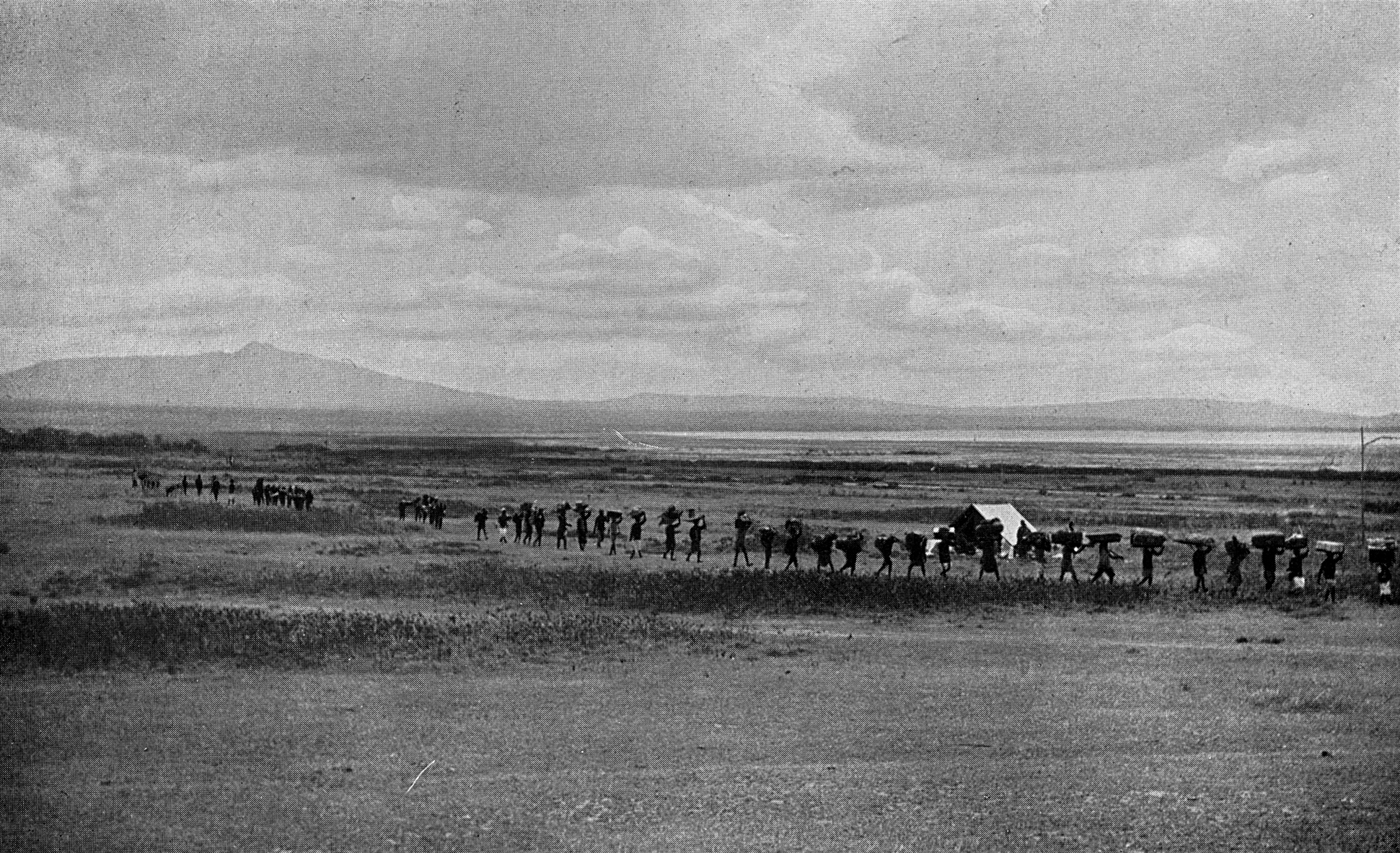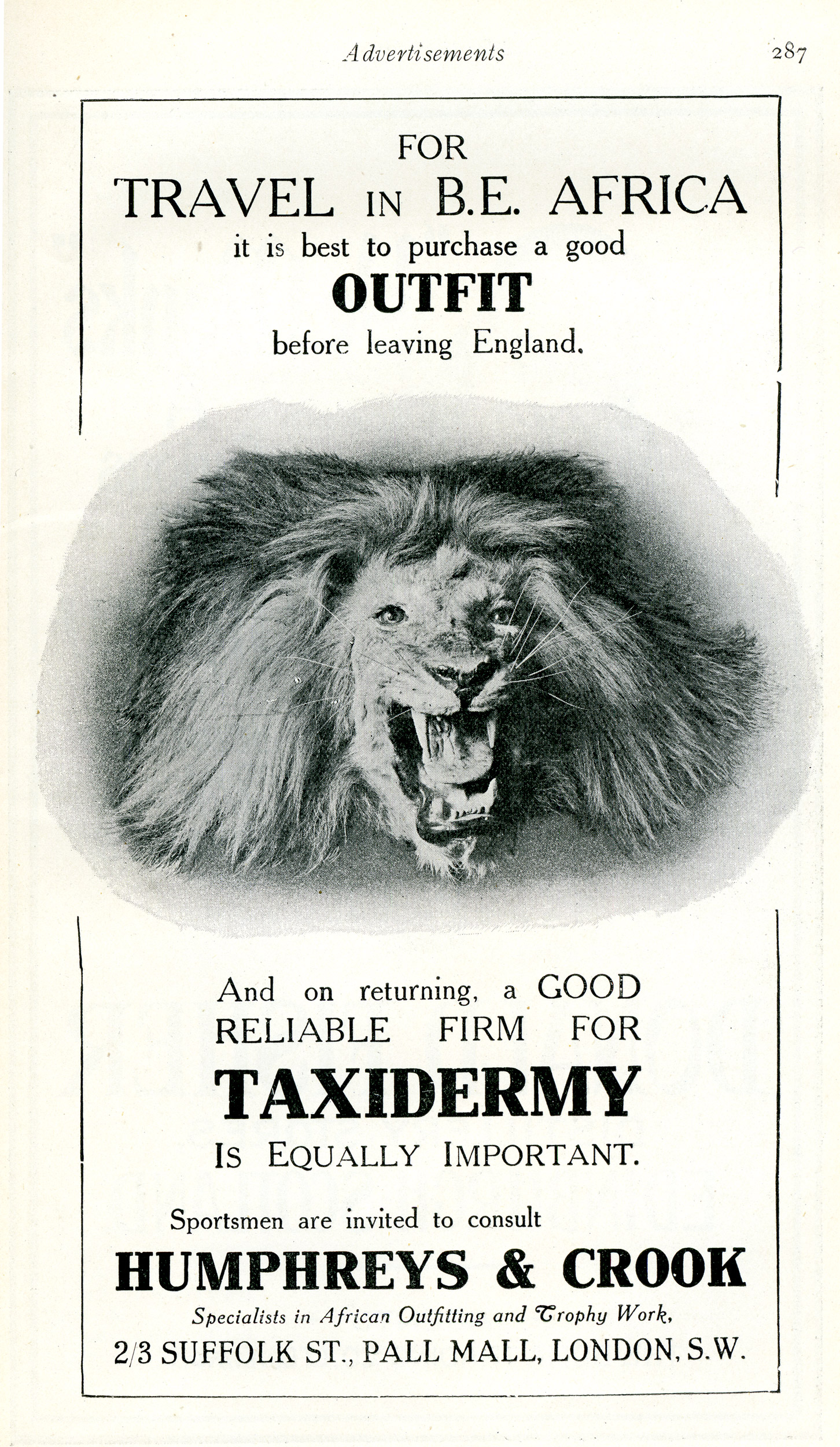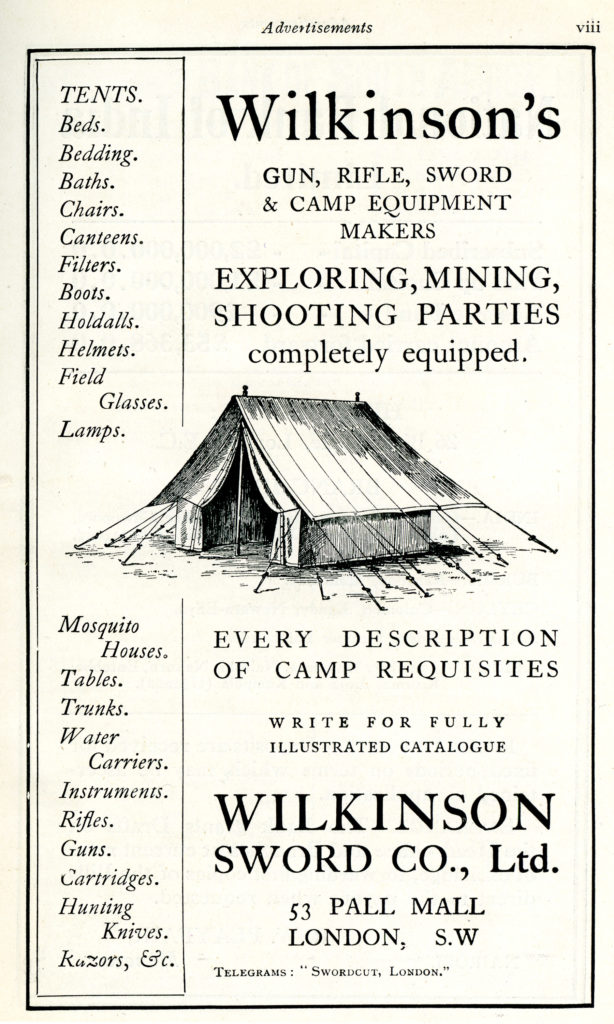On Safari

From Abel Chapman, On Safari: Big-Game Hunting in British East Africa, with Studies in Bird-Life (Edward Arnold, London, 1908).
Photo: R. J. Cuninghame

From H. F. Ward and J. W. Milligan, Handbook of British East Africa (The Caston [B.E.A.] Printing & Publishing Co., Ltd., Nairobi, 1912).
Frick's personal library included a large collection of books about Africa and the adventurers who journeyed there, and many of them offered advice on travel itineraries and equipment lists. Percy C. Madeira's Hunting in British East Africa (1909) included a “List of equipment from England for two persons for one hundred days safari.” In addition to basic camping supplies and food, Madeira's essentials included chocolate, brandy, and Scotch whiskey.
The costs of going on safari meant it was largely a pursuit of the privileged classes. In The Land of the Lion (1909), W. S. Rainsford's estimate was $500 a month for an expedition of three to four months for two people and about 60 porters, but not including food for the sportsmen, guns and ammunition, hunting licenses, customs fees, and railroad travel. This translates to well over $10,000 a month in today's money. Additional costs could be incurred for longer trips into more remote areas, not to mention the expenses of preparing, packing, and shipping trophies home.

From H. F. Ward and J. W. Milligan, Handbook of British East Africa (The Caston [B.E.A.] Printing & Publishing Co., Ltd., Nairobi, 1912).
If an army is said to “march on its stomach,” it might be equally true for a safari. The contentment of the crew and their ability to function efficiently could well depend on the availability of fresh meat. Fresh fruits and vegetables were scarce, but game of some kind could usually be found to supplement the tinned and dried staples and the porters' daily “posho” (usually grain of some kind and possibly rice and/or beans). Game meat was often tough and stringy, and sometimes hours of boiling failed to make it palatable. The natives, with decidedly different tastes than the Europeans or Americans, were said to be fond of zebra and elephant flesh, usually raw or barely cooked. Rhino-tongue soup, ostrich-egg omelets, wildebeest liver and bacon, and giraffe marrow might be on the menu for the safari clients. A dinner example from Abel Chapman's book, On Safari (1908), included: marrow-soup, cutlets of gazelle, spatchcocked guinea-fowl, curried venison, and marvelous pudding (cornflour from Glasgow, peaches from Australia, or pineapple from Natal), with tea and a final “tot.”
Once a hunter collected his trophies, it was essential to treat the skins and skulls properly before shipping them home. Insects, rot, and unpredictable weather could quickly cause a prized specimen to become unusable for a taxidermy mount. Drying and preservative agents commonly used in the field included wood ash, alum, arsenic, turpentine, and napthalene (found in mothballs). For those who managed to bag an elephant it was especially challenging to transform such a large animal into a transportable package. In Vivienne de Watteville's, Out in the Blue (1927), it took a dozen boys standing on a folded elephant skin, pulling it taut with ropes, to reduce it to a 5 x 6 x 2 ft. cube. The extraordinary weight of the skin required five men to carry it.
Frick donated many of the African specimens he collected to the museum and played an active role in how they would be mounted and displayed by providing dimensions, drawings, and ideas to the preparators and taxidermy artists. With their innovative techniques and attention to detail, chief taxidermist Remi Santens and his brother, Joseph, were renowned for creating lifelike mounts, and their work can still be seen today in the museum's Hall of African Wildlife.

From C. H. Stigand, The Game of British East Africa (Horace Cox, Windsor House, London, 1909).

From H. F. Ward and J. W. Milligan, Handbook of British East Africa (The Caston [B.E.A.] Printing & Publishing Co., Ltd., Nairobi, 1912).

From H. F. Ward and J. W. Milligan, Handbook of British East Africa (The Caston [B.E.A.] Printing & Publishing Co., Ltd., Nairobi, 1912).
